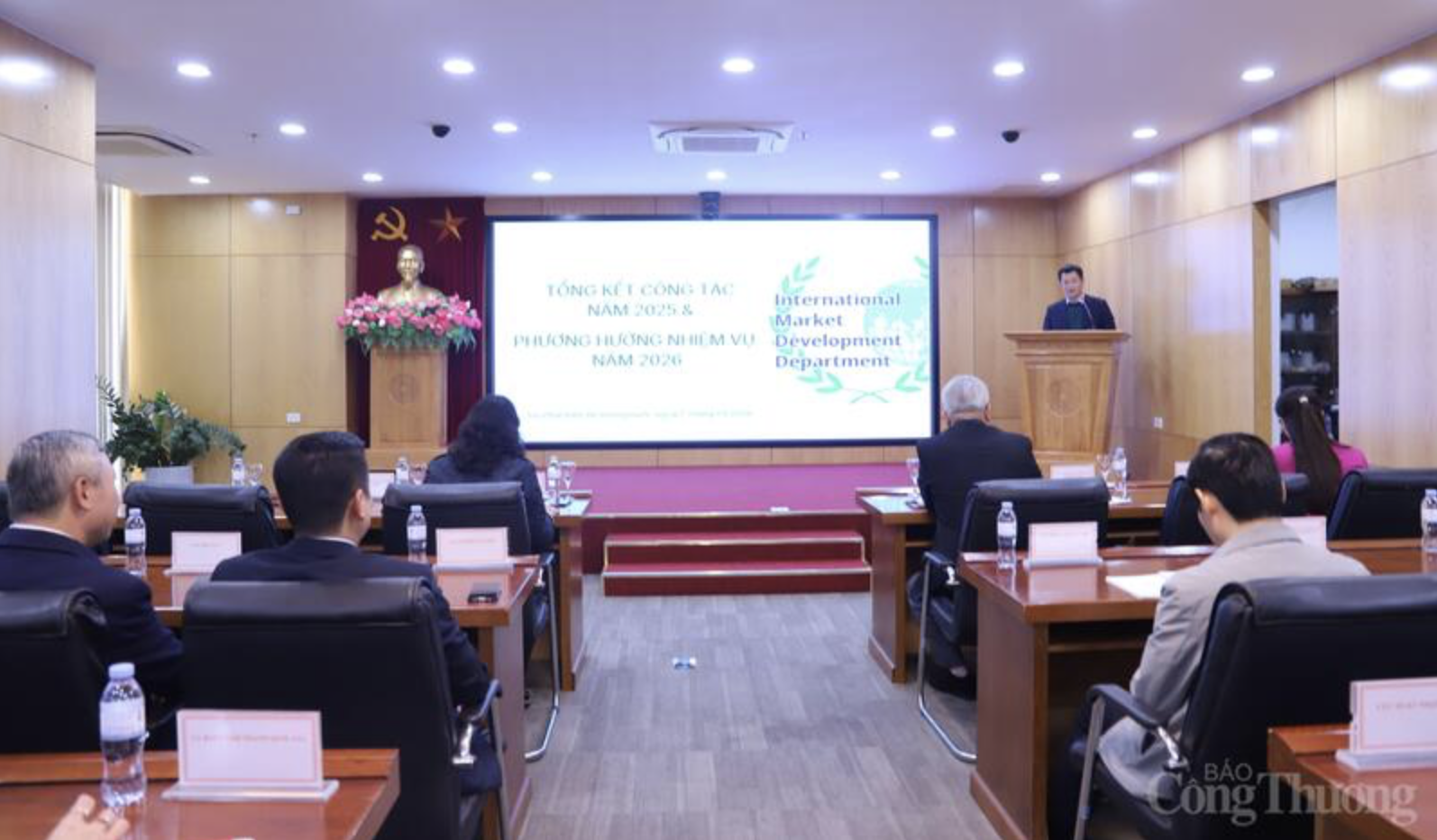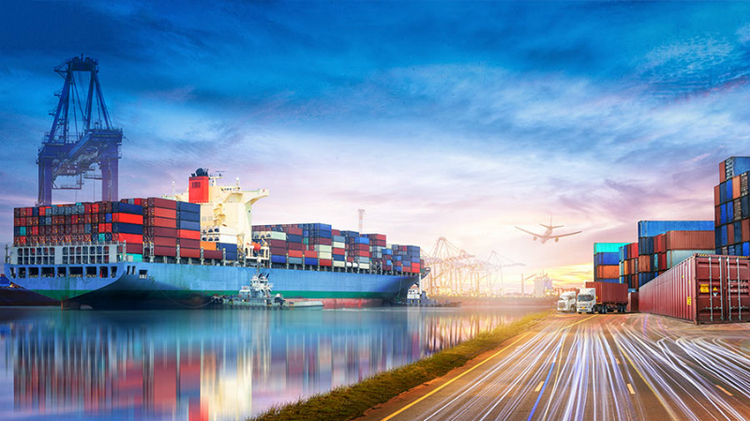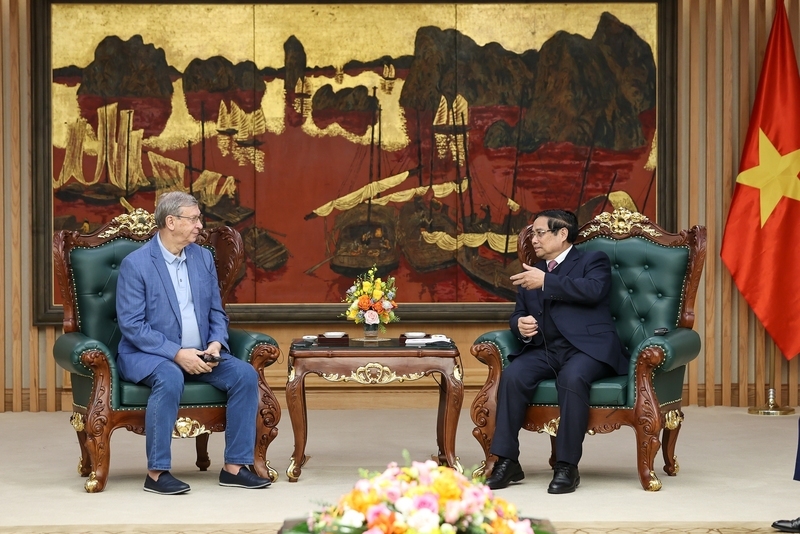
Foreign markets fuel growth, making a key contribution to GDP
19:05 | 23/03/2025 09:53 | 07/01/2026Trade
 |
 |
| According to the General Department of Vietnam Customs’ statistics, in the first 11 months of 2022, Vietnam reached import and export revenues of almost US$674 billion, taking the total to US$732.5 billion in 2022, up 9.5 percent from 2021. Exports were expected to increase 10.5 percent to reach US$371.5 billion, exceeding the targets set by the National Assembly and the Government (an 8 percent growth). Thirty-nine exports were expected to yield more than US$1 billion each (four items more than 2021), including nine items bringing in over US$10 billion (1 item more than 2021). |
 |
Tran Thanh Hai, Deputy Director of the Ministry of Industry and Trade’s Foreign Trade Agency shared the recent foreign trade growth was due to enterprises that have stabilized and restored production and trading activities since the fourth quarter of 2021. The increased import of raw materials for production is a great motivation to create a source of goods for export activities. “This is also the time when new-generation FTAs come into effect and take effect. With big markets such as the EU, the UK, the CPTPP (Comprehensive and Progressive Agreement for Trans-Pacific Partnership) bloc, and Asia Pacific market, the agreements have created good momentum, especially for market areas with which Vietnam has never signed an FTA, such as Canada, Peru and Mexico,” as Hai said. |
 |
The Ministry of Industry and Trade and other ministries and sectors have exerted their efforts to facilitate trade and administrative reform so that import and export activities of enterprises are facilitated favorably. Accordingly, the ministry has increased the transfer of self-certification of origin to enterprises. If in the past, most of businesses had to go to authorized agencies like the Ministry of Industry and Trade to get a Certificate of Origin (C/O), now, the Ministry of Industry and Trade is following the trend of gradually shifting to self-certified enterprises to reduce time and costs. In addition, the Ministry of Industry and Trade is promoting the issuance of electronic C/O. Currently, in ASEAN (the Association of Southeast Asian Nations), 100 percent electronic C/O has been issued. In addition, the Ministry of Industry and Trade is actively issuing electronic C/O and exchanging electronic data, recognizing the electronic data so that businesses can enjoy incentives with many partners, including the Republic of Korea (RoK) and the Eurasian Economic Union (EAEU). A 2022 highlight is agricultural product exports with impressive growth, including coffee, tea, pepper, cassava, and rice, among others. |
 |
The export structure continues to improve positively, reducing the amount of raw exports, increasing exports of processed products and industrial products, creating conditions for Vietnamese goods to penetrate deeply in global production and supply chains. Processed industrial products accounted for a major proportion in the export structure, representing more than 86 percent of the total export turnover. The 2022 import value was expected to increase 8.5 percent over 2021. Imports serving export and essential goods production increased, accounting for nearly 90 percent of the total; while imports as discouraged goods represented only six percent. This was the seventh year in a row that Vietnam made a trade surplus, reaching US$11.2 billion in 2022, making a positive contribution to the balance of payments, helping improve foreign reserves, and stabilize exchange rates and other macroeconomic indicators. |
 |
 |
Hai predicted foreign trade would further face difficulties, major ones of which are the Russia-Ukraine conflict and the falling demand for goods worldwide. The Ministry of Industry and Trade has set out a number of measures to support businesses, of which the main task is to endorse the information about FTAs. This is considered a long-term tool to maintain sustainable export growth. In addition, the ministry identifies the trade promotion, focusing on traditional trade promotion programs, especially when the COVID-19 pandemic has been basically controlled in many countries around the world. |
 |
In parallel with those measures, it is necessary to further promote the effectiveness of the e-commerce channel – a tool which has been of good use in recent years. At the same time, we should exert every effort to enact the administrative reform, to reduce logistics costs for mitigation of difficulties for enterprises. Regarding import and export businesses, Hai pointed out, after the challenges over the past time, the imitativeness of enterprises is the vital factor to overcome difficulties. It is possible that at this time, businesses will still be affected temporarily, causing a decrease in revenue and export scale, but if there are solutions to cope with risks, when conditions are more favorable, exports will grow again. “Good exporters should not be subjectively satisfied with their achievements because the current context contains in itself rapid fluctuations that are unpredictable. Thorough preparation for each phase is an important factor,” Hai said. |
 |
In the long run, setting up a professional contingency is a sustainable factor for future exports. Because, there have been a number of fraudulence and/or scams or goods deliveries that are not accepted by the some markets, leading to extra cost of container storage and warehouse rental. It commonly happens, while businesses have not been thoroughly informed, so when an incident occurs, it leads to unexpected misperception and confusion. Therefore, having a professional contingency, along with the process of increasing integration, will be an opportunity for businesses to familiarize themselves with the world market, prepare, expand and improve their knowledge in order to work out appropriate response plans and diminish the risks. |
 |
 |

19:05 | 23/03/2025 09:53 | 07/01/2026Trade

19:05 | 23/03/2025 09:52 | 07/01/2026Economy

19:05 | 23/03/2025 15:21 | 06/01/2026Trade

19:05 | 23/03/2025 15:16 | 06/01/2026Industry

19:05 | 23/03/2025 13:13 | 06/01/2026Trade